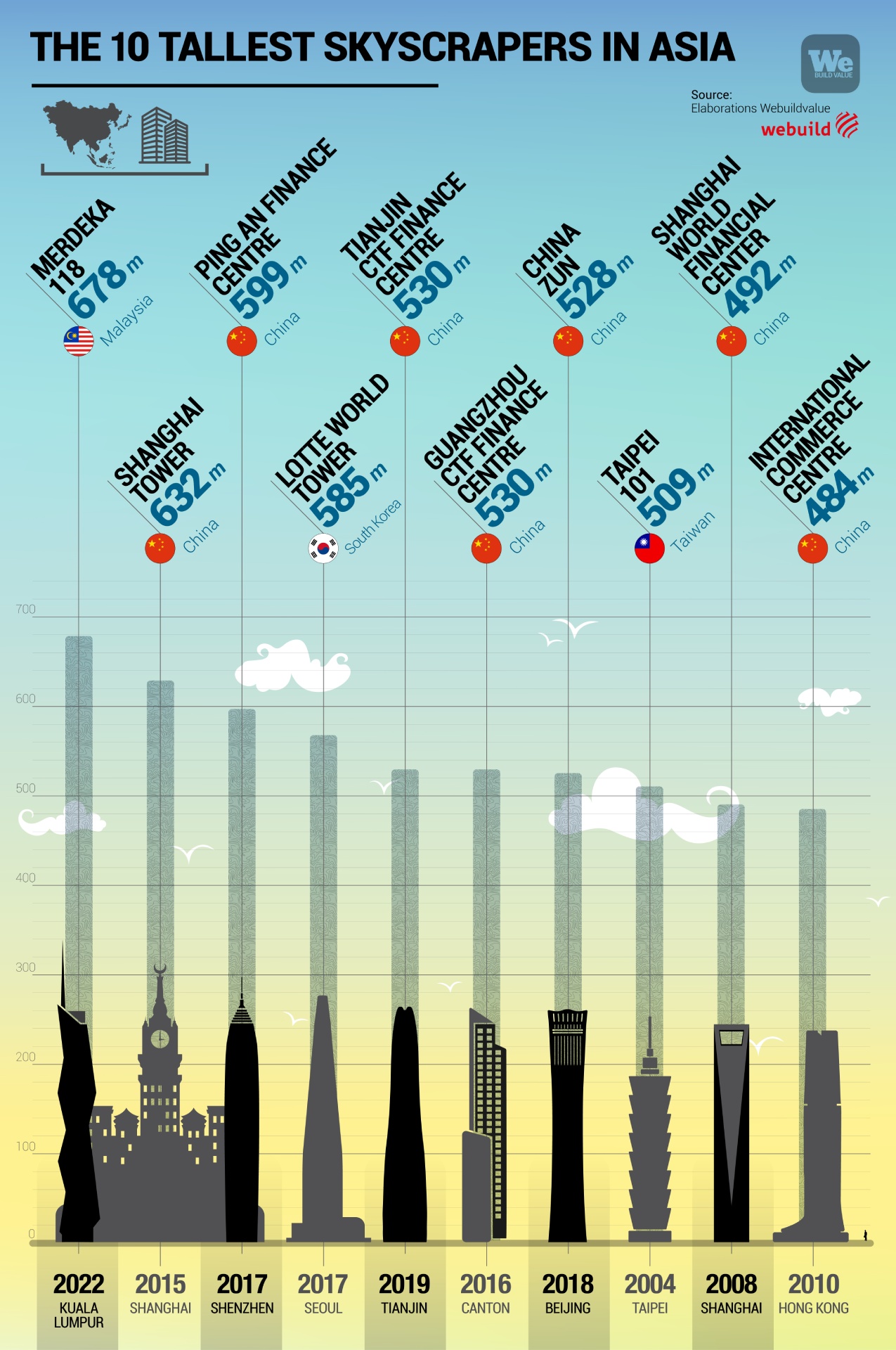The sustainable secret of the Lotte World Tower, Seoul’s futuristic skyscraper, is hidden 200 meters below the sidewalks of the South Korean capital. At a depth that is well beyond that of the foundations charged with sustaining one of the tallest buildings in the world, there are 720 geothermal probes that feed six brine and water heat pumps, able to heat and cool the air inside the steel and crystal giant.
The energy sources are one of the flagship features of this record-holding building that was inaugurated in 2017 after about five years of work. In addition to the six heat pumps connected to the probes, there are also six water/water heat pumps and 12 large heat pumps. The six water/water pumps are fed by the river Han, which crosses Seoul and flows a few steps away from the tower. The river water is filtered and, through a complex system, heat is generated and transferred to a liquid brine and from there transported to the pumps.
It is complex powering system that aims to be sustainable and is directed by a control center built within the tower. The plant, spanning 8000 square meters, controls the pumps’ operations and ensures the heating and cooling of the structure. This ecological system has transformed the Lotte World Tower in one of the most modern examples of skyscrapers with urban sustainability.
Seoul, the city that grows at the feet of its tower
Jamsil is the southern Seoul neighborhood, in the middle of downtown, with streets along the bank of the river Han. It is here that the “vertical city” of Lotte World arises, the complex of buildings that have redesigned the skyline of the South Korean capital. It is an open air museum of contemporary architecture and together a futuristic place where you smell the aroma of what is to come. The Lotte Tower was erected here, in this intersection of large roads, skyscrapers, offices and meeting places. A building that defies the laws of physics (585 meters high and the tallest in South Korea), it offers vertical spaces for urban development. Its 123 floors hold apartments, offices, stores, a 7 star hotel, places for leisure activities and even a pool on the 85th floor.
On top of the tower is a panoramic restaurant and an observation deck that allows one to admire the greatness of Seoul, a metropolis of 10 million souls, the political, economic and social center of South Korea.
It is here that every day what South Koreans call “the miracle of the river Han” is renewed, that incredible joining that for years now has transformed this area into the a real economic accelerator turning South Korea into one of the most advanced systems in South East Asia. The Lotte World tower contributed to this great multiplier of value and opportunities, generating an economic return of $43 billion and 10.000 jobs with a $2.5 billion investment.
Sustainability and safety at 585 meters above sea level
The “miracle of the Han river” fuels not only ambitions of growth but also an architectural race fought with ambitious and futuristics projects inspired by sustainable methods. The Lotte World Tower was designed by Khon Pederson Fox Architects, the prestigious New York architectural firm, which spent 13 years finalizing its plans for the skyscraper in an effort to combine modernity with traditional Korean art. The building was to become a symbol of this “vertical city” that aims to challenge the Asian megacities but at the same time be a champion of green building through a series of specifications, from construction techniques to the materials used, which garnered the LEED Gold certification, the highest recognition for environmental standards.
The design of the building was inspired by the curves of Korean ceramics and calligraphic brushes. The tower blends beauty and sustainability with safety. The roof structure alone used 3,000 tons of steel and is designed to withstand earthquakes of a magnitude of 9 on the Richter scale and winds of up to 80 meters per second. From that height it is possible to observe all of Seoul and capture with one look the entirety of the Han river miracle.


